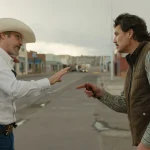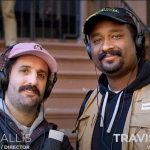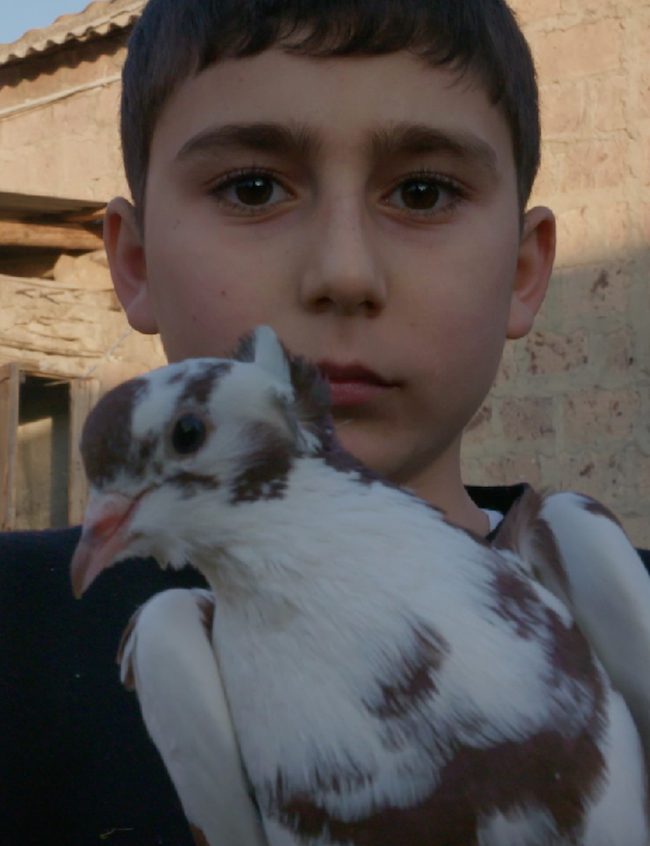A Conversation with Robert Requejo Ramos (SOUTH BEACH SHARK CLUB)
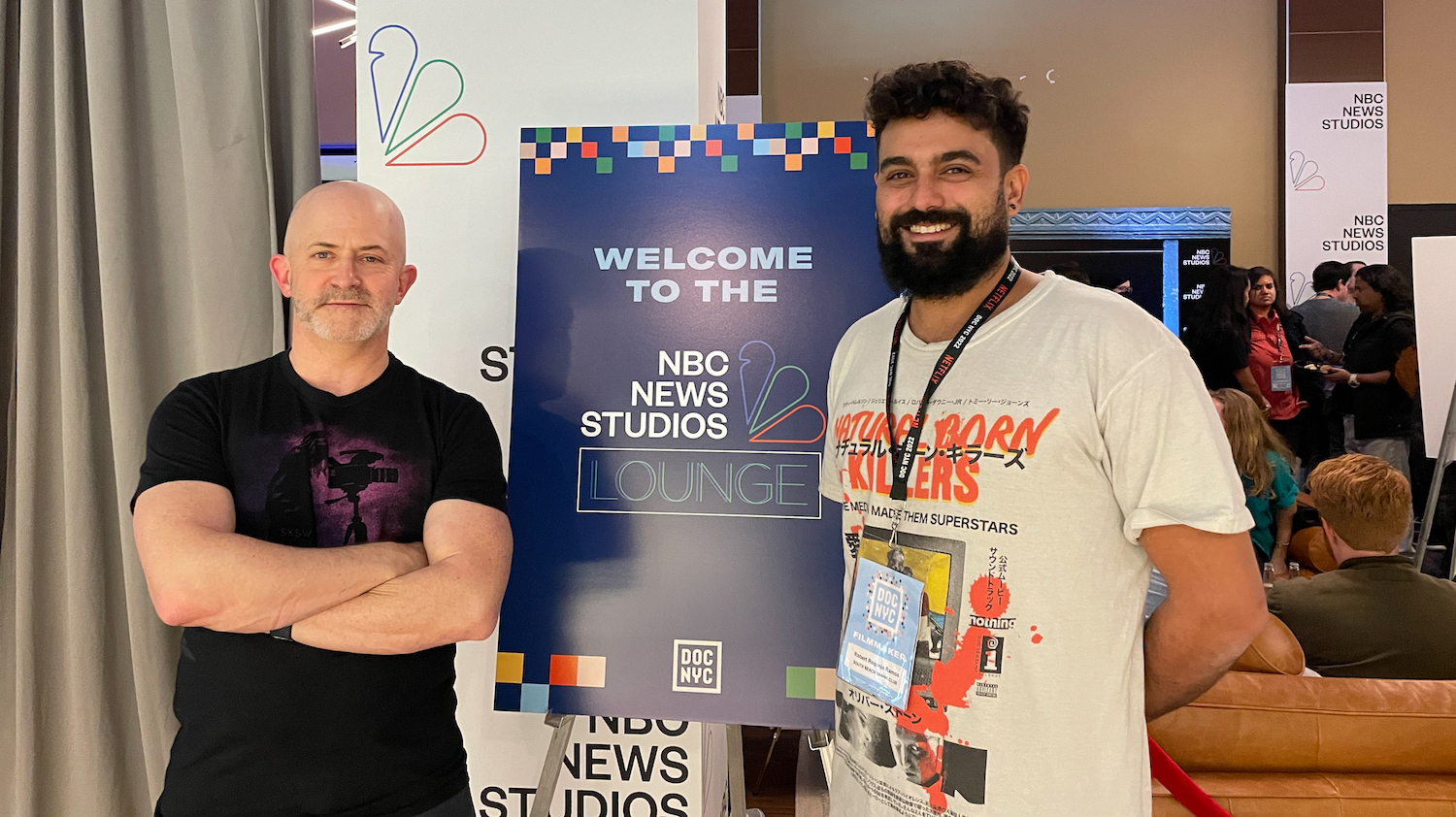
In his debut feature documentary, South Beach Shark Club (which I reviewed out of DOC NYC 2022), director Robert Requejo Ramos examines the history of an informal group of shark hunters in Miami’s South Beach community from the 1970s to the present. He focuses on three men in particular: the late Rene de Dios, the now-retired JD Hammer, and the younger Shannon “Seaweed Jr.” Bustamante, who represents the current generation. It’s a fascinating mix of history and anthropology, with some great archival footage to supplement the interviews. I met up with Requejo Ramos at DOC NYC and here is a transcription of that conversation, edited for length and clarity.
Hammer to Nail: What drew you to making this particular story?
Robert Requejo Ramos: It was a story that was really close to me. My father and my uncle were involved with these guys. They were kind of part of this first wave of Cuban migrants who grew up in the late ’60s, early ’70s in Miami Beach. They were kids in the ’70s, and they basically just grew up on the beach down there, surfing, skateboarding, fishing. Everything revolved around the pier and around the beach. They’d literally sleep on the floor of the pier in the sand a lot of times.
HtN: Just like the people in the film.
RRR: Well, they are basically the people in the film. My uncle’s actually in the film. This was a story that was really personal to me. I grew up hearing these things. They were almost like fairy tales or something, or these grand stories about these big shark catches and them hanging out on the bridge for four days at a time and not showering, and I somehow romanticized that from my perspective as a child. I kind of tried to tell the story from that perspective, as well, unravel these things like they’re legends and hand-me-down stories. That’s how I was attracted to it. It felt like I had to tell it or it’s just going to disappear.
HtN: You’re kind of like Seaweed, Jr., only he became a shark catcher and you became a filmmaker.
RRR: Yeah, something like that. He’s trying to be a filmmaker now, too. He learned how to edit and has a YouTube channel.
HtN: Since you grew up around these folks and it’s a personal story, have you yourself ever gone out trying to catch sharks?
RRR: Wow, that’s a good question. Actually, when I first got in with these guys, even though some of them knew my uncles and my pops and stuff, I had to prove myself to them, that I could hang with them and that I was going to portray them in some kind of … I don’t know. I had to get their trust, essentially, so I actually paddled out bait for them at 3 in the morning in three-foot seas. It was, for me, extremely dangerous, man. I’m a licensed captain. I grew up on the water, so I feel comfortable in those situations. But this shit was fucking crazy.
HtN: I bet! Because nighttime is when the sharks are out, and you’re sitting there bringing out bait.
RRR: Yeah. There’s blood trailing behind the boat. There are giant hooks at your feet, and there are giant waves that you’re going into in the middle of the night. If you flip over, you’re pretty much screwed.
HtN: (laughs) Yeah. You couldn’t pay me enough money to do that.
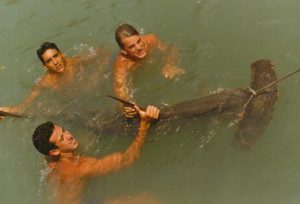
A still from “South Beach Shark Club”
RRR: (laughs) Sometimes documentary filmmaking requires one to do things like this, and in this situation, this is what I had to do.
HtN: I’ve made documentaries, but I would never do that. (laughs)
RRR: Yeah. I mean, I gained their trust after that, you could say, and they did open up to me a lot more. Respected me, for sure.
HtN: We all have things that we do. I’m a mountain guy, so I might do crazy stuff in the mountains, but not that.
RRR: See, I’m an ocean guy. Although I do love the mountains, as well.
HtN: Whence all the archival? Did you just have access to that because it’s a personal story for your family? Where did you get all that great archival material?
RRR: Well, that was another thing that allowed us to make the movie, obviously, because the movie’s almost 50% archival, probably. Most of that came from the Wolfson Archives, which is a little-known archive that Miami-Dade College keeps. It’s very disorganized, but they have home videos, news footage, I mean, just tons of stuff that I basically unearthed of Miami Beach in the ’70s that I’d never seen anywhere else before. This also provided a platform to show these images of Miami Beach back then. Most people just know about the ’80s, the “Cocaine Cowboys” thing, but in the ’70s, it was this super sleepy, quiet beach town. You see all the archival footage with all the old people sitting out on the patios. We started finding these specifically pertaining to the group, the shark club before it was the shark club, just these guys hanging out around the pier and fishing and surfing and just really cool stuff from the ’70s. It blew my mind.
HtN: That’s cool. Speaking of Cocaine Cowboys, do you know director Billy Corben?
RRR: Yeah. Billy’s a friend of ours. I mean, he saw our short film, and he picked it to win some awards at other festivals back in the day. This feature film came out of a short film that we did that was on PBS for a while. It’s called Rene de Dios and the South Beach Shark Club.
HtN: Is that where the T-shirt that Hammer is wearing comes from?
RRR: Sure, yeah. It’s funny, we made our own shirts and stuff, and then they went to the flea market and made their ghetto knockoff shirts of my movie. I have some of these knockoff rip-off T-shirts that they made that are really funny. They just took my art from Facebook and put it on a T-shirt. (laughs)
HtN: Since this is a personal story, you probably knew the history of South Beach already. Nevertheless, did you learn new things about South Beach in making this film?
RRR: Oh, my God, I learned so much, man. Just putting specific dates to things. There are some dates that are specific to the club itself, important events that occur, like when this guy catches that hammerhead, and it’s the biggest fish ever caught, or biggest shark ever caught on Miami Beach, and these certain times when this club starts. Those are pertaining just particularly to the club, so obviously I learned a lot about that. In terms of how the city changed, the things that were going on? It’s just getting specific dates. You’re just like, “Oh, the ’80s in Miami,” but the Mariel boatlift, when that happened, that’s really when it started to push out the previous elderly residents and the scene changed. These specific dates just became clearer, and thus, my idea of the entire story itself and how it occurred became clearer, too.
HtN: How did you come up with the three-chapter structure of yours?

Filmmaker Robert Requejo Ramos
RRR: Billy influenced that a lot, actually, because Billy came to our studio and sat in on a writing session. We were mostly focusing on Rene, and he was like, “You have to tie these other guys into it somehow.” He’s like, “Act three is Shannon. Make act three Shannon.” At first, we kind of went against it, and it was an idea we kept coming back to. Ultimately, it ended up holding water, no pun intended, and we went with that. I mean, I think it works.
HtN: It’s good because we’ve gotten to know Shannon. Obviously, he’s an important character, and then by that point, you make the story fresh again because now we’re learning about him.
RRR: We totally switch gears, just rounding up that last chapter of Miami in the ’90s and what happened, from how the city changed after the ’80s when all this crime started happening. There was just a little bit of “wild west” out there. Obviously, everyone knows about the drug running and the gang activity and all this stuff that was happening. That’s how it culminated in the ’90s, which people might wonder or be curious to understand how it manifested itself into what it did in the ’90s. SBP—South Beach Posse—they were RICO-ed. There were all these little gangs that had formed, of all places, in Miami Beach, if you believe that, and they were actually dangerous.
HtN: The older I get, the less appealing sports fishing is to me. I’ve always not liked sports hunting, but at least I did sports fishing as a young man with my best friend, who still fishes all the time. As I’ve gotten older, I’ve just found it less appealing, and your characters apparently had a change of heart, too, because they’re now throwing the sharks back alive. While you address that, you don’t spend a lot of time on why they’ve had a change of heart. So, how did they come about that change of heart?
RRR: Yes. I mean, it’s a fair critique of the film, too.
HtN: I didn’t mean it as a critique, per se. I’m just curious.
RRR: I know, but I consider it a fair critique. We’ve gotten it before, and I think it’s interesting. We didn’t want to make that a focal point of it. I wanted to approach it almost like an anthropological study of these guys. Then that happens in the modern times, so that’s kind of when it’s addressed. It’s interesting because you have a case study almost of the difference between Hammer and Rene. Hammer was never really a guy who really … when he killed sharks it was because he had to pay the rent and he needed money and things like that to get by.
Rene, he was a psychopath almost. I mean, he went off the rails. He became super obsessed with it. He did actually work with the scientific community, and they would request, “Oh, we need a hammerhead this big.” But he got fired from his job at the Miami Herald because he fished in the Miami Herald Fishing Tournament and won it. From there on out, it was fishing full time. He couldn’t hold a job. Nowadays, Hammer spends a lot of time out there on that bridge, and he says it in the film, he’s like, “I don’t need to catch anything. I just want to be out here.” He represents a different attitude, I think, from way back. Maybe he was in tune with that earlier than some of these other guys.
Nowadays, I mean, it’s all about conservation. They try to protect the sport and their way of living. I mean, the community that they established, it goes back to the late ’60s, as you see in the movie. I mean, that’s what they’re trying to protect, I guess. It’s just not the same with their approach to killing sharks. I guess it’s just not relevant anymore, and obviously, they want to have a sustainable fishing population.
HtN: Sure. And the culture has shifted, though I doubt there are that many people out there feeling bad about killing sharks because they’re seen as such violent predators. Do you know if they are at all endangered in Florida?
RRR: It’s interesting, man. There’s a lot of argument about this stuff. We would go to the FWC meetings—Florida Fish and Wildlife—and you have these commercial fishermen saying, “I can’t bring in a fish because every single fish I bring in is just eaten by sharks,” because I guess they did put out some kind of regulations. I think you’re still allowed to take one a day if you wanted to.
HtN: OK, so there are regulations against massive shark fishing, then.
RRR: Yeah. I mean, it seems, from what I understand from going to these meetings and talking to all these different anglers and stuff and commercial fishermen, that longline fishing is really fucked up. I mean, they just kill hundreds of sharks, and then it’s usually bycatch, which means they just cut them off and throw them away dead. There’s no way to really quantify how many sharks are around. I mean, the ocean’s very large, obviously, but people on reefs and in certain fishing spots are reporting, if anything—I don’t want to say an excess of sharks because sharks are really important, and there should be a lot of sharks—a lot of sharks, at least in South Florida, from what I know.
HtN: So at least in South Florida, they’re not endangered.
RRR: I don’t think so.
HtN: Good to know. Well, thank you very much. I enjoyed the film.
RRR: Thanks, Chris. Appreciate it.
– Christopher Llewellyn Reed (@ChrisReedFilm)
2022 DOC NYC; Robert Requejo Ramos; South Beach Shark Club documentary

